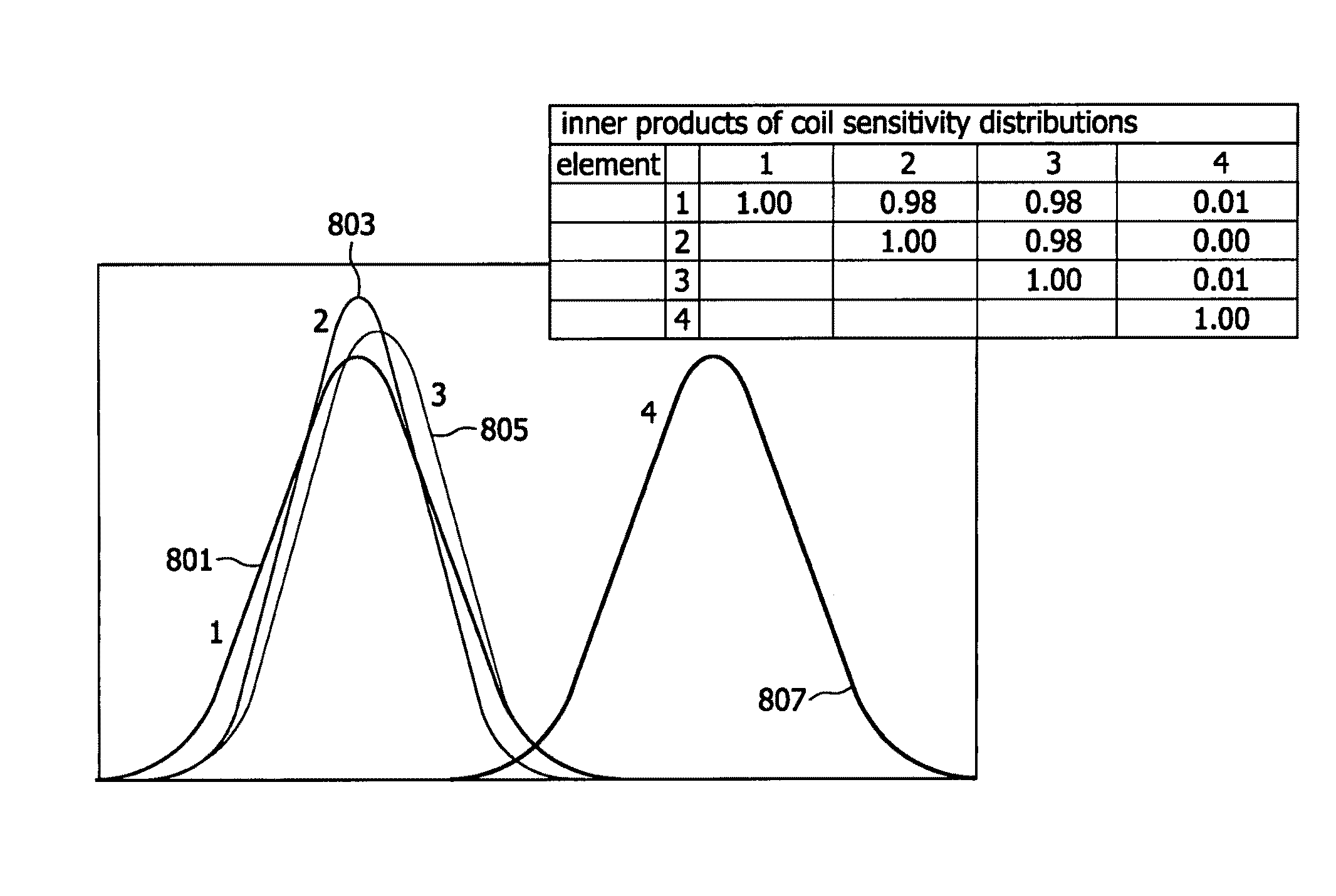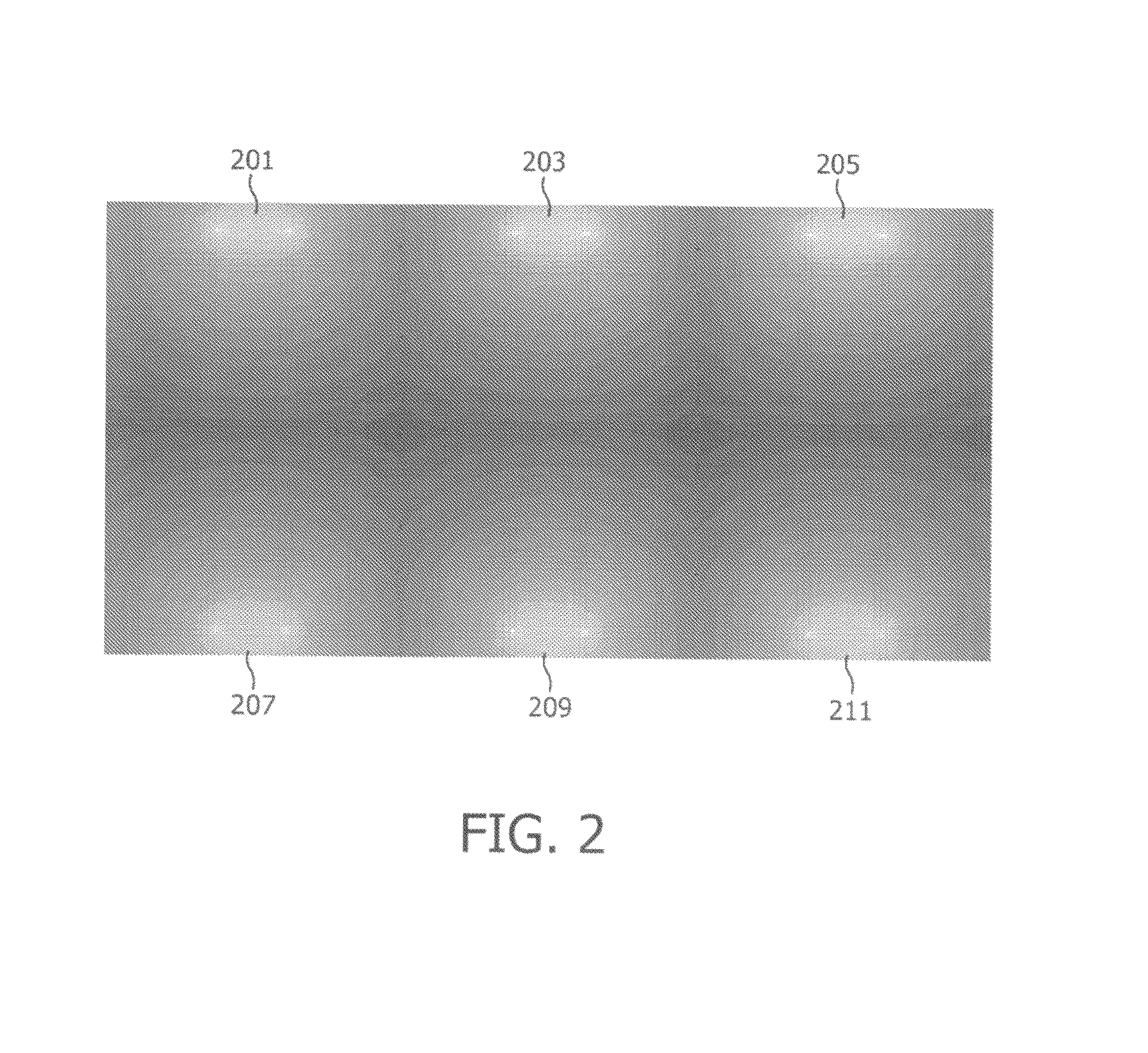Coil element selection device for selecting elements of a receiver coil array of a magnetic resonance imaging device
a magnetic resonance imaging and selection device technology, applied in the field of magnetic resonance imaging devices, can solve the problems of long adjustment period, inability to select elements in low proton density areas, and knowledge of coil positions or measurement, and achieve the effect of improving image quality
- Summary
- Abstract
- Description
- Claims
- Application Information
AI Technical Summary
Benefits of technology
Problems solved by technology
Method used
Image
Examples
Embodiment Construction
[0045]FIG. 1 shows a block diagram of the sensor selection device comprising a provider 101, a means 103 for determining a mutual quantity 105 and a selector 107. The provider provides a first characteristic property 109 of a first sensor (not shown in FIG. 1) and a second characteristic property 111 of a second sensor (not shown in FIG. 1).
[0046]FIG. 2 shows a calculated coil sensitivity map of two arrays of three elements. A first array comprises the elements 201, 203 and 205. The second array comprises the elements 207, 209 and 211.
[0047]FIG. 3 shows a contour 213 of a subject to be scanned (e.g. a patient) and a scan volume 215 (region of interest, predetermined scan volume). For example, the elements 207 and 209 which are arranged outside the scan volume 215 may be used for sensing, since their sensitivity extends within the scan volume.
[0048]FIG. 4 demonstrates the inventive region of interest based sensor element selection. In this embodiment, the magnetic resonance imaging d...
PUM
 Login to View More
Login to View More Abstract
Description
Claims
Application Information
 Login to View More
Login to View More - R&D
- Intellectual Property
- Life Sciences
- Materials
- Tech Scout
- Unparalleled Data Quality
- Higher Quality Content
- 60% Fewer Hallucinations
Browse by: Latest US Patents, China's latest patents, Technical Efficacy Thesaurus, Application Domain, Technology Topic, Popular Technical Reports.
© 2025 PatSnap. All rights reserved.Legal|Privacy policy|Modern Slavery Act Transparency Statement|Sitemap|About US| Contact US: help@patsnap.com



